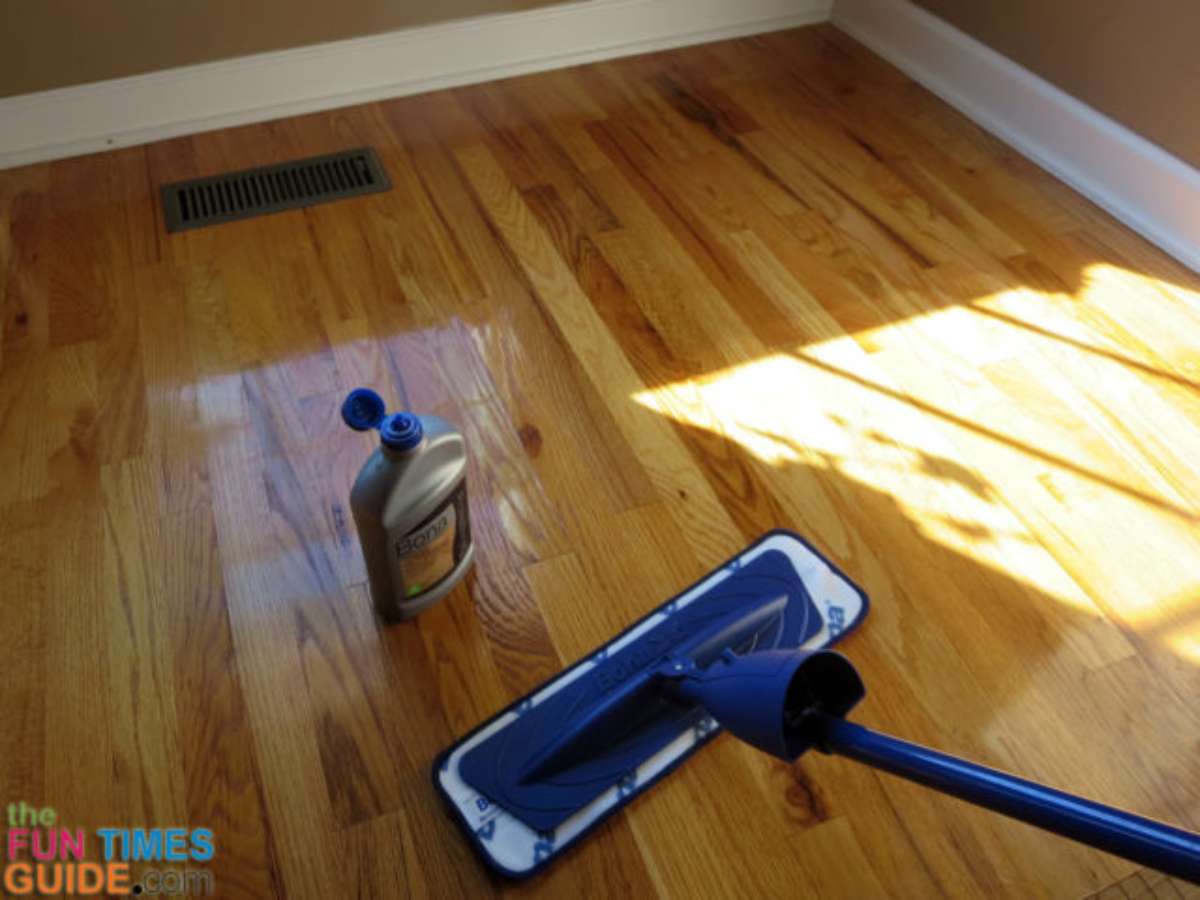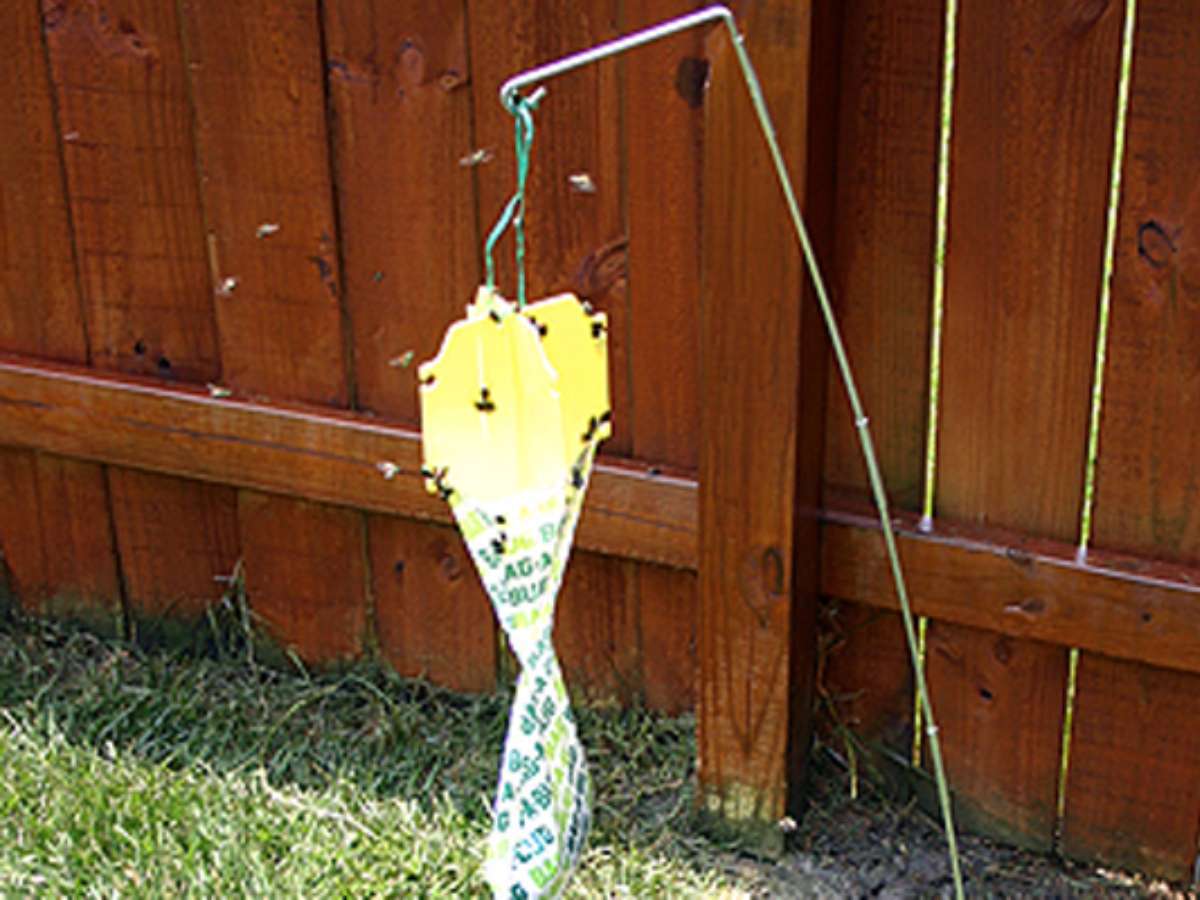Bed sheets get tangled in the dryer? Here’s how to dry sheets faster without your sheets being in a big wad when they come out of the dryer!
I don’t know about you, but I really love getting into my bed after a long day — to be enveloped by freshly laundered sheets.
What I don’t love is how the sheets end up in a tangled, knotted ball in the dryer during the washing and drying process.

I knew there had to be a more efficient way to dry bed sheets without the hassle of fighting with a knotted mess in the dryer!
Who wouldn’t love to know the secret of how to dry sheets faster… and having a perfectly dried sheet, free of knots and wrinkles, ready to be folded (or placed on the bed) from the moment you open the dryer door?
I’ve read about a couple different sheet drying methods that claim to prevent the bed sheets from becoming a knot that’s difficult to unravel.
So… to find the best way to dry bed sheets quickly, I decided to compare two popular methods of drying bed sheets in the dryer against my own method. Then, I compared those 3 methods to the traditional method of drying sheets.
Following is what I’ve learned about how to dry bed sheets in the most efficient manner — without knotting, tangling, or getting all wrapped up in a ball in the dryer.
If you’re wondering how to dry a wet bed sheet fast… I’ve found it!
My Favorite Way To Dry Bed Sheets Quickly Before Doing This Test
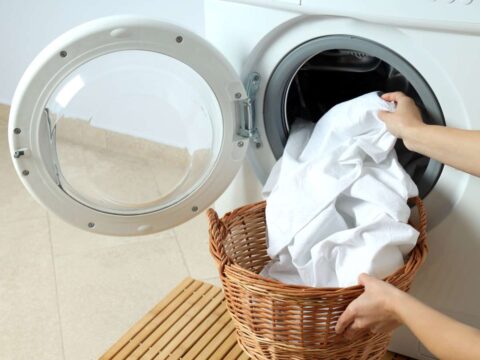
I make our bed like some hotels do: using triple sheeting. It basically involves using 2 flat sheets to sandwich our duvet (instead of using a duvet cover), 1 fitted sheet, and 3 pillowcases.
So, when it comes time for laundering, I’ve discovered that if I dry each bed sheet (2 flat sheets and 1 fitted sheet) solo in the dryer for approximately 10 minutes each, they don’t ever get tangled!
This works out to approximately 30 minutes of total drying time — plus another minute or so to fold and then switch out each sheet.
My Test: 4 Ways To Dry Bed Sheets In The Dryer
When I explained this to my mother-in-law during a recent discussion regarding “pain-in-the-butt” sheet drying methods, she felt that switching out the items in the dryer every 10 minutes would add to her laundry workload.
She did have a valid point in her scenario. You see, she runs a VRBO in Nashville. So she’s washing mountains of sheets at a time during every turnover.
Because of this, I decided that I would need to include the “traditional” method of drying bed sheets in my comparison as well.
You know… the one where you load all the sheets into the dryer at once, hit the button to start the drying cycle, only to return to a tangled, still damp mess of a sheet ball!
For my bed sheets in the dryer comparison, I calculated the actual time spent drying, untangling, re-separating, and re-drying bed sheets using each of the following methods:
- Traditional Method – put all wet sheets into the dryer at one time
- Tennis Ball Method – put tennis balls into the dryer with the sheets
- Dry Towel Method – put a large, dry towel into the dryer with the wet sheets
- Solo sheet Method – put only one wet bed sheet at a time into the dryer
I used the same 3 sheets and 3 pillowcases for every trial.
The Results
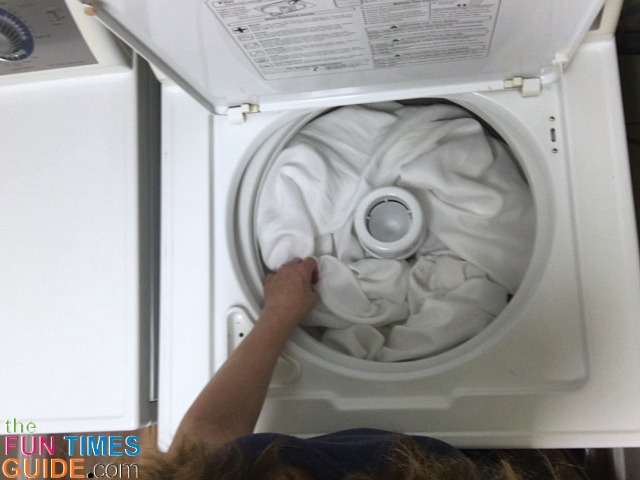
Following are my actual results after drying the same bed sheets 4 different ways!
The “total time” calculated for each method is the time it took from starting the dryer to folding all 3 sheets and 3 pillowcases.
Obviously, dryer times will vary — so these times are based on my dryer and my mad sheet-folding skills.
#1 – Traditional Method
- I separated and loaded all 3 sheets and 3 pillowcases into the dryer from the washer.
- I started the dryer cycle for 30 minutes.
- After the first 30-minute dryer cycle stopped, I had to untangle the giant wad containing a mixture of dry, damp, wrinkled sheets and pillowcases from a giant ball.

- I re-separated the sheets and pillowcases.
- I restarted the dryer cycle for another 20 minutes.
- After the second 20-minute dryer cycle stopped, I had to untangle another giant ball of wadded up wrinkled sheets — but at least they were finally all dry.
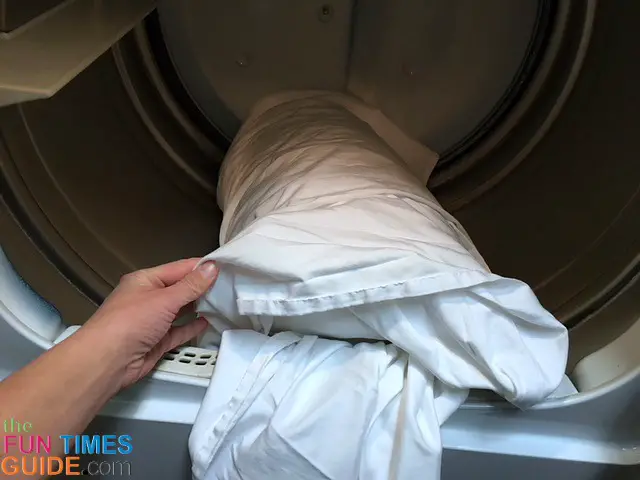
- I folded the dried, wrinkled sheets and pillowcases.

Total time: 58 minutes
The takeaway: I certainly have experienced bed sheets in giant knots which are difficult to unravel from the dryer before. But it did not occur on this particular trial. They were in a ball, but not in knots.
#2 – Tennis Ball Method
- I separated and loaded all 3 sheets and 3 pillowcases into the dryer from the washer.
- I added 2 brand new tennis balls.

- I started the dryer cycle for 20 minutes.
- After the first 20-minute dryer cycle had stopped, I found the sheets in 2 separate bundles. They were partially dry and partially tangled.
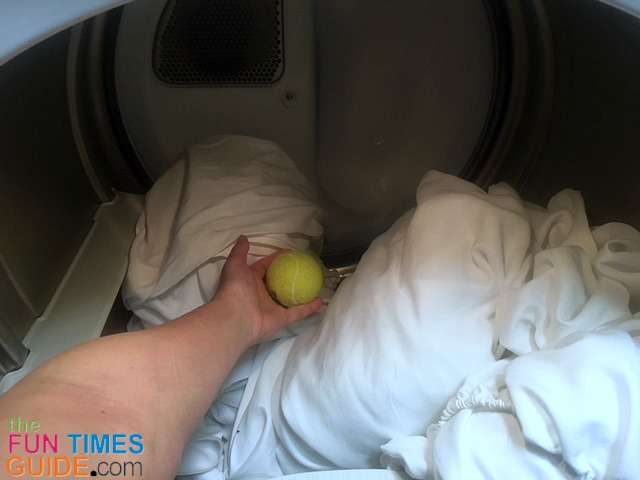
- I untangled the damp sheets and re-separated them.
- I then restarted the dryer cycle for another 20 minutes.
- After the second 20-minute dryer cycle had stopped, I found that the sheets were actually tangle-free and wrinkle-free.
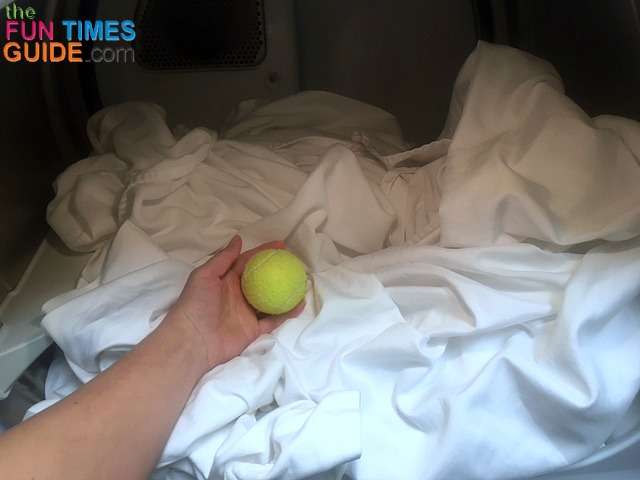
- I folded the sheets and pillowcases.
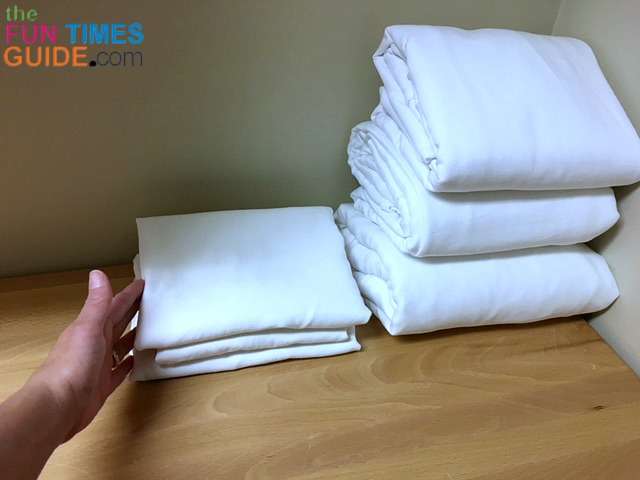
Total time: 46 minutes
The takeaway: The tennis ball method only seemed to keep the sheets from getting tangled during the second cycle of 20 minutes. In theory, if I had I not intervened and re-separated them at the first 20 minute mark, the sheets would have remained a tangled mess the entire drying time on a regular cycle.
#3 – Dry Towel Method
- I separated and loaded all 3 sheets and 3 pillowcases into the dryer from the washer.
- I added 1 clean, dry bath towel.
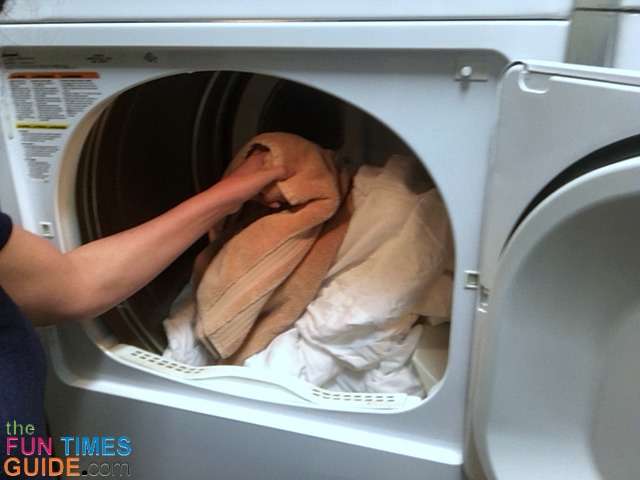
- I started the dryer cycle for 30 minutes.
- After the 30-minute dryer cycle had stopped, I was surprised to find the sheets were all dry — despite being in a giant ball.
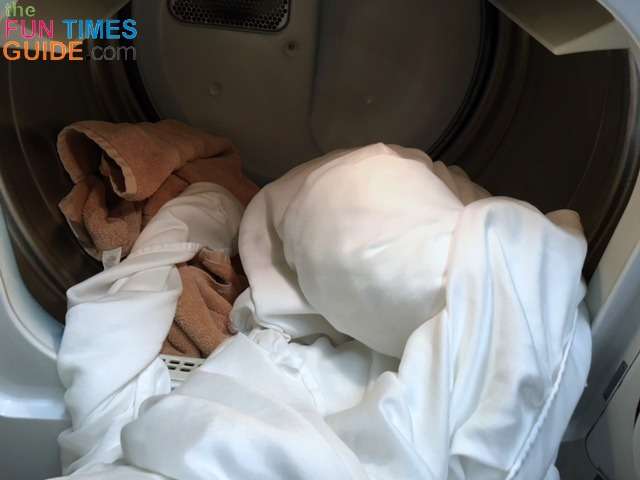
- I folded the sheets and pillowcases.
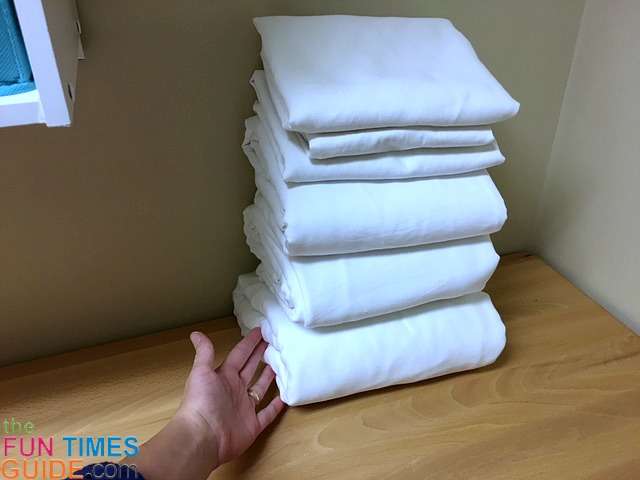
Total time: 36 minutes
The takeaway: The sheets came apart with relative ease. The first flat sheet came loose, and it appeared the fitted sheet was the culprit in gobbling up the other flat sheet. The flat sheet that got gobbled up in the center had some wrinkles, but they were minor. Even though they weren’t in too much of a tangled mess, they were still in a ball nonetheless.
#4 – Solo Sheet Method
- I separated the fitted sheet from the 2 flat sheets and 3 pillowcases in the washer and loaded only the fitted sheet into the dryer. (TIP: Starting with the fitted sheet is helpful if you’re placing the sheets directly back on the bed.)
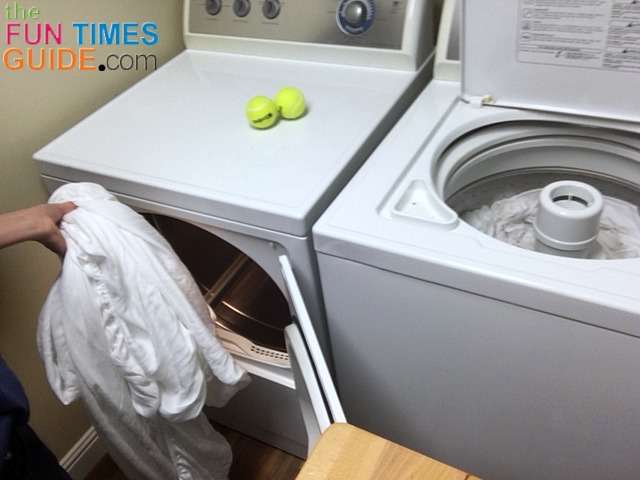
- I started the dryer cycle for 10 minutes.
- After the first 10-minute dryer cycle had stopped, I removed the dry, wrinkle-free fitted sheet from the dryer.

- I moved 1 flat sheet and the 3 pillowcases from the washer to the dryer.
- I started the dryer cycle for another 10-minute cycle.
- While the dryer was running, I folded the fitted sheet that had dried.

- After the second 10-minute dryer cycle had stopped, I removed the dry, wrinkle-free flat sheet and pillowcases.
- I added the remaining flat sheet to the dryer.
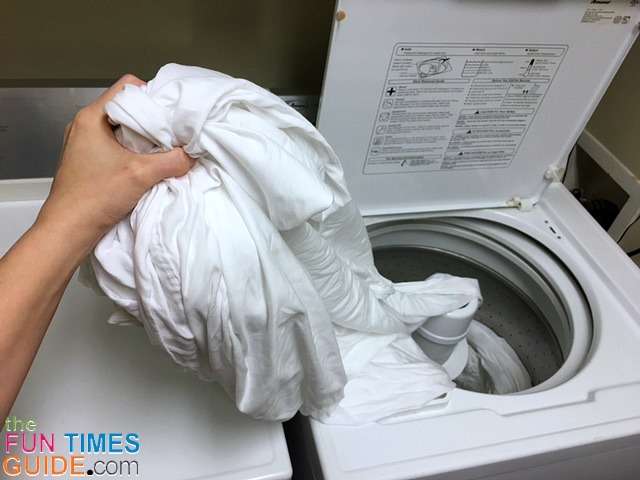
- I started the dryer cycle for 10 minutes.
- While the last flat sheet was drying, I folded the dry, flat sheet and pillowcases.
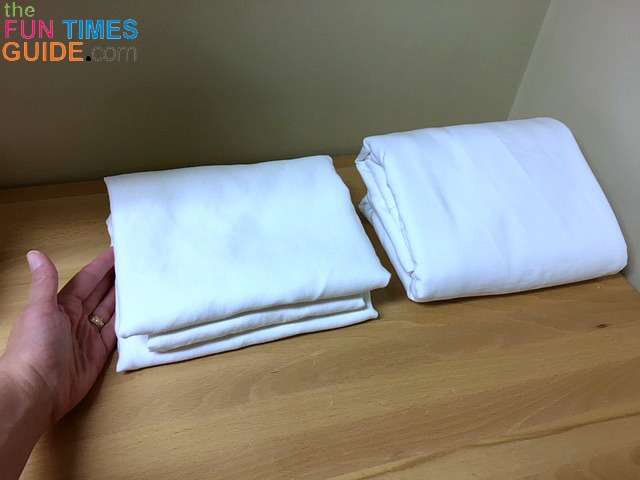
- After the third 10-minute dryer cycle had stopped, I removed the final sheet and folded it.
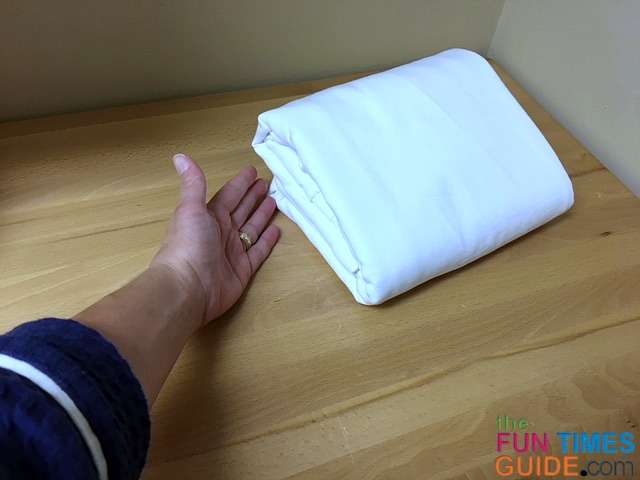
Total time: 35 minutes
The takeaway: Despite going back & forth to the dryer a few times, the task was always easy, and I continued to feel productive.
My Favorite Way To Dry Bed Sheets Fast After Doing This Test
My conclusion is that drying bed sheets is time-consuming, no matter what!
After trying each method, I think I will continue to dry our sheets one at a time using the solo sheet method.
Yes, it does require an extra trip to the dryer, but at least I don’t ever have to deal with a tangled, wrinkled sheet ball. Plus, I only have to fold 1 sheet at a time — so it doesn’t seem like a lot at once.
I’ve also found that bed sheets will stay wrinkle-free if you take them out of the dryer as soon as the drying cycle stops and either fold them or place on the bed (rather than letting them remain in the dryer).

The Bottom Line
I am now confident that my personal method of drying bed sheets — one sheet at a time — is legitimately the best way to do it if you want to dry bed sheets quickly and efficiently.
I’m happy that I conducted this trial, so I can officially rule out the other methods.
To sum it up:
- The solo sheet method is clearly the best way to dry sheets quickly.
- The solo sheet method took 1 less minute than the dry towel method.
- The solo sheet method saved a whopping 11 minutes, compared to using tennis balls inside the dryer.
- And the solo sheet method was a full 23 minutes faster than just tossing all of the bed sheets into the dryer at once.
Now I know for sure that drying bed sheets one at a time in the dryer is the most convenient (and least frustrating) for our household on laundry day. And as a bonus… you don’t end up with a tangled mess of sheets coming out of the dryer!
So, if you too were wondering how to dry a bed sheet fast… I hope I was able to show you how to make sheets dry faster AND shed some light on the tangled bed sheet mystery for you.
If you have another solution that works well, please comment below. I would love to hear from you!
There’s a handy little gadget (that I have not personally tried yet) that supposedly helps to prevent your bed sheets from becoming tangled in the washing machine and in the dryer. It’s called Wad-Free For Bed Sheets. You simply attach one Wad Free to the 4 corners of a bed sheet before tossing it into the washer or dryer!
Like this post? Save it to read again later… or share with others on Pinterest!


